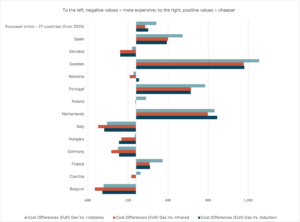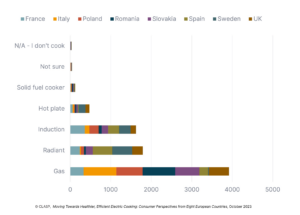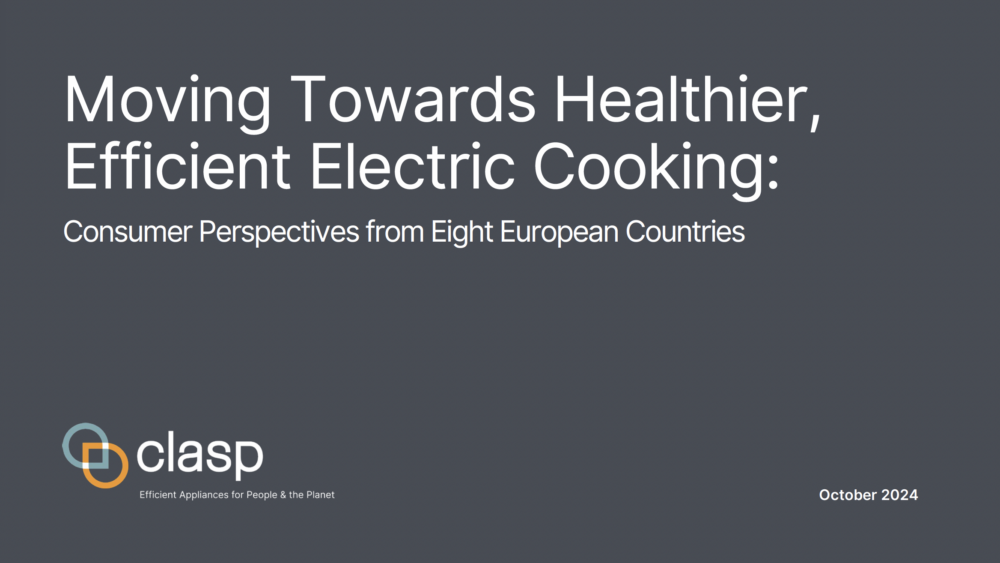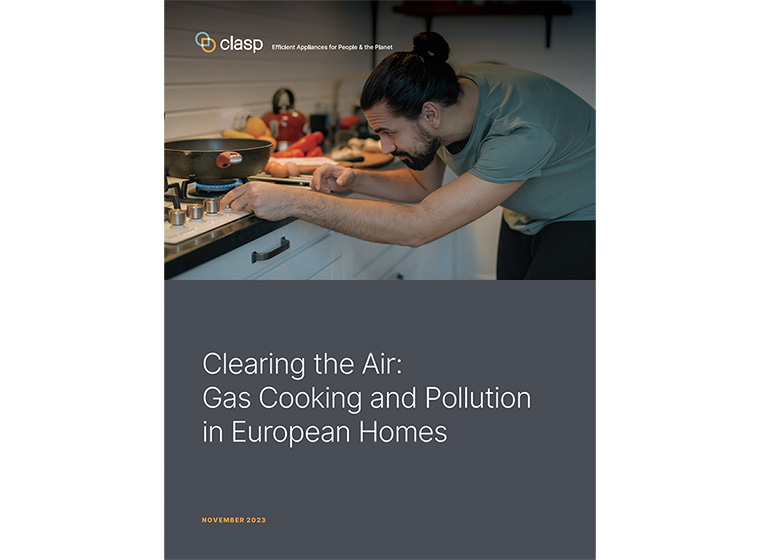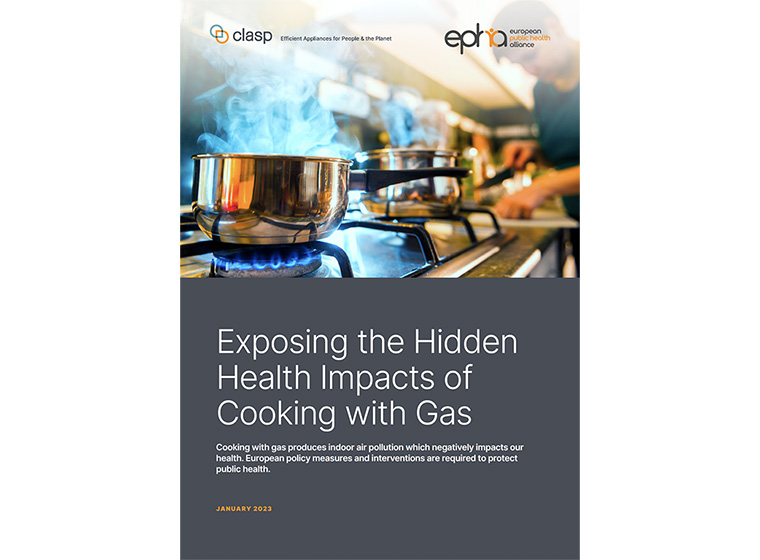Electrifying Cooking in Europe
CLASP is partnering with organizations, advocates, and experts to build a strong evidence base and raise awareness about the benefits of electric cooking. This growing network is urging European governments to develop impactful Ecodesign and Energy Labelling policies that favor clean cooking, improve energy efficiency, and support the widespread and equitable adoption of electric cooking appliances in the European Union (EU) and the United Kingdom (UK).
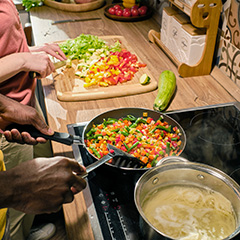
Electric cooking is the cleanest and healthiest solution.
CLASP research reveals that gas hobs (cooktops) emit nitrogen dioxide (NO2), a harmful pollutant. Gas cooking has been linked to asthma symptoms in over 700,000 children in the EU and 500,000 in the UK. Switching to electric cooking is the quickest way to eliminate this pollution at its source.
Over 54% of European households using gas for cooking exceed WHO's indoor air quality limits for NO2.
The 2023 reports “Exposing the Hidden Health Impacts of Cooking with Gas” focused on the EU and “The Public Health and Environmental Impacts of Cooking with Gas in the UK” by CLASP and EPHA, with scientific support from TNO, found that gas cooking releases hazardous air pollutants into homes. Decades of research link gas cooking to serious health impacts.
We estimate that over 700,000 children in the EU experienced asthma symptoms linked to gas cooking, within a 12-month timeframe. While ventilation can help, it’s not sufficient. Recirculation hoods are ineffective at removing NO2, and externally vented hoods are only effective if properly maintained and used long enough.
Health impacts of pollutants from gas cooking
Building on this research, CLASP conducted a Europe-wide field study in 2023, in collaboration with TNO and Opinium Research. The findings, published in “Clearing the Air: Gas Cooking and Pollution in European Homes,” confirmed that gas cooking releases harmful pollutants into homes across Europe, often exceeding World Health Organization (WHO) guidelines and EU and UK outdoor air pollution limits.
Percentage of gas- and electric-cooking homes exceeding NO2 limit and guideline values
In homes equipped with electric hobs, indoor NO2 levels generally remain lower than those outdoors, even when windows are opened and outdoor pollution enters. However, in homes with gas hobs, indoor NO2 levels often exceed levels outside.
Comparison of NO2 concentrations
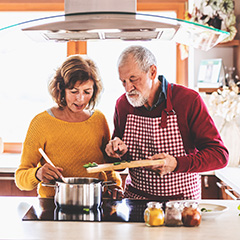
Transitioning to electric cooking is cost-effective in the long run.
CLASP assessed the economic cost of transitioning to electric cooking and quantified the health costs of gas cooking, showing that switching to electric is both feasible and cost-effective.
Gas cooking is estimated to cost the EU €3.5 billion and the UK £1.4 billion annually in societal costs.
While CLASP research found that 45% of European consumers believe gas hobs are the cheapest to purchase, the total cost of ownership over a 15-year lifespan tells a different story. Electric hobs – hotplates, induction, and infrared – typically offer lower total ownership costs compared to gas hobs. Although induction hobs tend to have a higher upfront cost, small government incentives can make them more affordable for many households.
CLASP’s report on the hidden health impacts of gas cooking in the EU reveals that gas hobs come with significant hidden costs. Indoor air pollution from gas cooking is estimated to cost the EU €3.5 billion annually in healthcare, lost productivity, and disability-adjusted life years (DALY). When these health-related costs are factored in, electric hobs become the clear, cost-effective choice across all countries.
Differences between the total cost of ownership of gas and electric hobs in the EU

Electric cooking is the only way to decarbonize kitchens, helping Europe meet its climate targets.
Electric cooking, especially when powered by renewables, is more efficient and environmentally-friendly than cooking with gas. Tests conducted by CLASP show that gas hob efficiency is overestimated by current performance measurement methods.
According to CLASP estimates, a phase-down of gas hobs in 2027 and a phase-out in 2030 would prevent 60 million tons of CO2e emissions by 2050.
Although gas and electric hobs serve the same purpose, they are tested differently to determine energy efficiency. For example, gas hobs are tested with larger cookware than what’s typically used at home, ensuring the gas flame’s heat is fully captured under the pot, which makes the test results seem more energy efficient for gas hobs. In contrast, electric hobs are tested with smaller cookware, more commonly used in households. These testing methods don’t reflect the actual energy efficiency differences between gas and electric cooking technologies and don’t reflect real-life consumer use.
Existing Ecodesign regulations rely on these different test procedures to determine the efficiency of gas and electric hobs. As a result, they do not encourage improvement of hob efficiency, which is essential for meeting net-zero goals by 2050. Transitioning to more efficient electric hobs would prevent CO2e emissions by 60 million tons by 2050.
In 2023 and 2024, CLASP collaborated with testing experts and an accredited laboratory to develop a test method to accurately compare the energy efficiency of gas and electric hobs. Testing with this method confirmed that electric hobs are more efficient than gas hobs. For instance, heating water to 90°C took nearly 13 minutes with a gas hob using an aluminum pot, compared to just over 6 minutes with an induction hob using a stainless steel pot.
Gas vs. induction: comparison of time required to heat water to 90°C
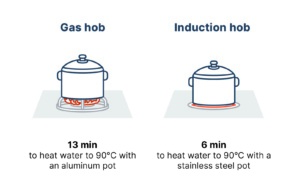
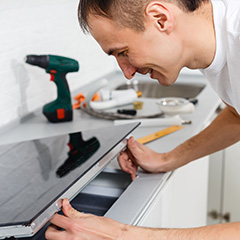
Appliance efficiency policies and financial incentives will drive the shift to healthier, more efficient electric cooking.
CLASP is gathering evidence and collaborating with the European Commission and UK Government to improve product efficiency, reduce pollution, and ensure people have the information and financial support they need to make sustainable choices when buying hobs.
European consumers want industry to improve its products and for governments to support the shift to electric cooking.
While most Nordic countries primarily use electric hobs, about half of European households still cook with gas. In countries like Italy, Romania, and Slovakia, over 80% of households rely on gas for cooking. This highlights the need for policy measures to reduce the use of polluting gas hobs.
Type of hob used by country, based on 8,000 survey respondents
The European Commission is reviewing the Ecodesign standards for cooking appliances, with new regulations expected by the end of 2025, which will be implemented by 2027. CLASP has recommended setting NO2 testing requirements and emission limits in the regulations, which should be based on a single standardized test method. This will allow policymakers and consumers to compare the energy efficiency of gas and electric hobs. As a result, the European Commission has included NO2 emission testing requirements and limits in the 2024 draft regulatory proposals, and industry has developed a formal testing process through the CEN/CENELEC technical committee. We are also working with the UK Government as they develop similar regulations.
CLASP's Research on Gas Cooking and Pollution in European Homes
Highlights
Materials are available below in English, Dutch, French, German, Hungarian, Italian, Romanian, Slovak, and Spanish. You may also find a Google Translate option at the bottom of this webpage.
Resources
Reports
October 2024
April 2024
November 2023
- Clearing the Air: Gas Cooking and Pollution in European Homes│ES, FR, DE, HU, IT, NL, RO, SK
- Executive Summary│ES, FR, DE, HU, IT, NL, RO, SK
October 2023
- Consumer Perspectives of Gas and Electric Cooking: Evidence from Four National Surveys in Europe│FR, RO, ES
- Executive Summary│FR, IT, RO, ES
September 2023
May 2023
- The Public Health and Environmental Impacts of Cooking with Gas in the UK
- UK Consumer Survey Results
January 2023
December 2022
- Health effects in EU and UK from cooking on gas | TNO Publications
- Effect of hydrogen gas mixes on gas hob emissions | TNO Publications
National Data and Policy Factsheets
2024
- Gas Cooking in the UK │La cuisson au gaz en France│Piani di cottura in Italia: situazione corrente e opportunità│Gătitul cu Gaz în România│Varenie na plyne na Slovensku│Cocinar con Gas en España
- CO2 Emission Reduction Scenarios from a Transition to Electric Cooking Appliances
2023
- Ecodesign and Energy Labelling Factsheet │ ES, FR, IT, RO, SK
- Frequently Asked Questions
- How to Improve Air Quality in Your Home When You Have a Gas Hob or Oven │ ES, FR, IT, RO, SK
- Cooking on Gas Releases Hazardous Pollutants into European Homes │ ES, FR, IT, RO, SK
- Exposing the Hidden Health Impacts of Cooking with Gas │ ES, FR, HU, IT, RO, SK
Videos
- What are the health risks linked to cooking with gas?
- Are some people more sensitive to the health impacts linked to cooking with gas?
- Are people aware of the impacts of cooking with gas?
- What can people do to protect themselves from the health risks linked to cooking with gas?
- Why is now the right time to switch to electric cooking alternatives?
Webinar Recordings
9 November 2023
8 June 2023
9 January 2023
Partner Resources
English
Clean Air Hub | Global Action Plan: Gas Cooking and Air Pollution
Coolproducts: Kitchen Appliances
European Public Health Alliance:
- Clean Air, Healthy Homes – Policy Solutions to Mitigate the Health and Economic Costs of Gas Cooking in the EU
- The Health Dangers of Cooking with Gas: Video Series
- Clean Cooking for Public Health
Global Action Plan:
- Cooking on gas: How harmful is gas cooking in the home?
- Time to get some fresh air: the not-so-hidden dangers of indoor air pollution
Global Cooksafe Coalition: Why Electric Cooking?
French
Respire :
- Cuisson au gaz
- Les cuisinières à gaz pourraient exposer environ 144 millions de personnes dans l’UE à un air intérieur pollué
Italian
Silverback: Cucinare senza gas
Spanish
La Federación de Consumidores y Usuarios: Sin gas en el hogar
Press Releases
English
- Gas cooking appliances cause regular pollution breaches in homes across Europe
- Gas cookers regularly breach air pollution limits
- UK policies do not protect the public from the impacts of gas cooking
Dutch
French
- Les cuisinières à gaz sont un facteur de pollution de l’air intérieur dans la plupart des foyers français
- La cuisson au gaz émet des niveaux de pollution hebdomadaires supérieurs aux recommandations de l’OMS
German
Hungarian
- A gáztűzhelyek Európa-szerte rendszeresen szennyezik az otthonokat
- A gáztűzhelyek rendszeresen átlépik a légszennyezettségi határokat – tanulmány
Slovak
Italian
- Case con cucine a gas: in Italia il 72% supera il valore giornaliero di biossido di azoto stabilito dall’OMS
- Studio: Cucinare con il gas supera regolarmente i limiti per l’inquinamento dell’aria
Romanian
Spanish
CLASP in the Press
English
- Daily Express: Gas cookers contributing to early deaths of 40,000 Europeans a year – UK in the top 5
- Forbes: How Spending Long Winter Days Indoors Can Impact Your Health
- The Guardian: Gas cookers pump out toxic particles linked to childhood asthma, report finds
- Bloomberg: Gas Stoves Mean Dangerous Pollution in Most Homes, Study Finds
- The Telegraph: Why your extractor fan won’t help if you’re cooking with gas
- The Daily Mail: Gas cookers ‘should come with a health warning’: Report reveals the appliances pump out ‘unsafe’ levels of pollution – as experts call for Brits to move to electric hobs and ovens
- BBC: Action urged to cut gas cooker health risks
- Forbes: Can Gas Cooking Impact Your Health And Indoor Air Quality?
- Euronews: Gas industry knew about indoor pollution from stoves 50 years ago, investigation reveals
- France 24: Asthma study sparks debate about safety of cooking with gas
- The Brussels Times: Around 15,000 children in Belgium may have asthma due to gas stove pollution
- Euronews: Gas cookers as toxic as ‘second hand smoke’, study reveals
Dutch
- AVROTROS Radar: Koken gevaarlijker dan je misschien denkt
- RTL Nieuws: Koken op gas slecht voor luchtkwaliteit in huis: ‘Gebruik liever inductie’
- AD: TNO adviseert: Doe het gasfornuis in de ban
- Het Parool: Koken op gas blijkt zeer slecht voor de lucht in huis: ‘Kies inductie en gebruik in ieder geval de afzuigkap’
French
- Le Point : Cuisine au gaz : une étude pointe une surexposition au dioxyde d’azote dans les foyers français
- TF1 Info : Cuisson au gaz : alerte sur une “menace silencieuse” pour la santé des foyers français
- Le Parisien : La cuisson au gaz pollue davantage l’air intérieur
- BFM TV : “Un risque accru de 20%” : L’impact de la cuisine au gaz sur la santé pointé du doigt par une étude
- La Voix du Nord : Cuisson au gaz: une étude alerte sur une menace largement ignorée par les foyers français
German
- Südwestrundfunk: Studie: Gasherde verursachen hohe Schadstoffbelastung
- Euronews: Exklusiv: Gasherde sind genauso giftig wie “Passivrauchen” für Kinder – Studie
Italian
- Corriere della Sera: Biossido d’azoto e polveri sottili in cucina: livello di inquinanti più alto di quello nel traffico
- Lifegate: Conto alla rovescia per il gas in cucina? Nei Paesi Bassi, Ikea bandisce i fornelli
- Huffington Post: In Olanda Ikea dice basta al fornello a gas, venderà solo piani a induzione
Spanish
- El Periódico: Ikea empieza a eliminar las cocinas de gas
- El Periódico de la Energía: ¿Elegir una cocina eléctrica o de gas? Una decisión más importante de lo que parece
- Diario Público: Cocinas de gas, una elección poco saludable
Updates
2024
- The Push for Efficient, Healthy Cooktops
- The Induction Revolution: Top Chefs Embrace Electric Cooking
- National Cooking Trends from Six European Countries: Insights and Policy Recommendations
- Beyond the Flames: Expert Insights on Gas Cooking
- Electrifying Cooking for Healthier and Cleaner Homes
2023
2022
We extend our gratitude to the funders and partners who have supported this work on electric cooking, including:
Contact Us
To stay up to date with our latest research, follow us on LinkedIn and X.
Please contact clasp.europe@clasp.ngo for more information.
#CookCleanerEurope




